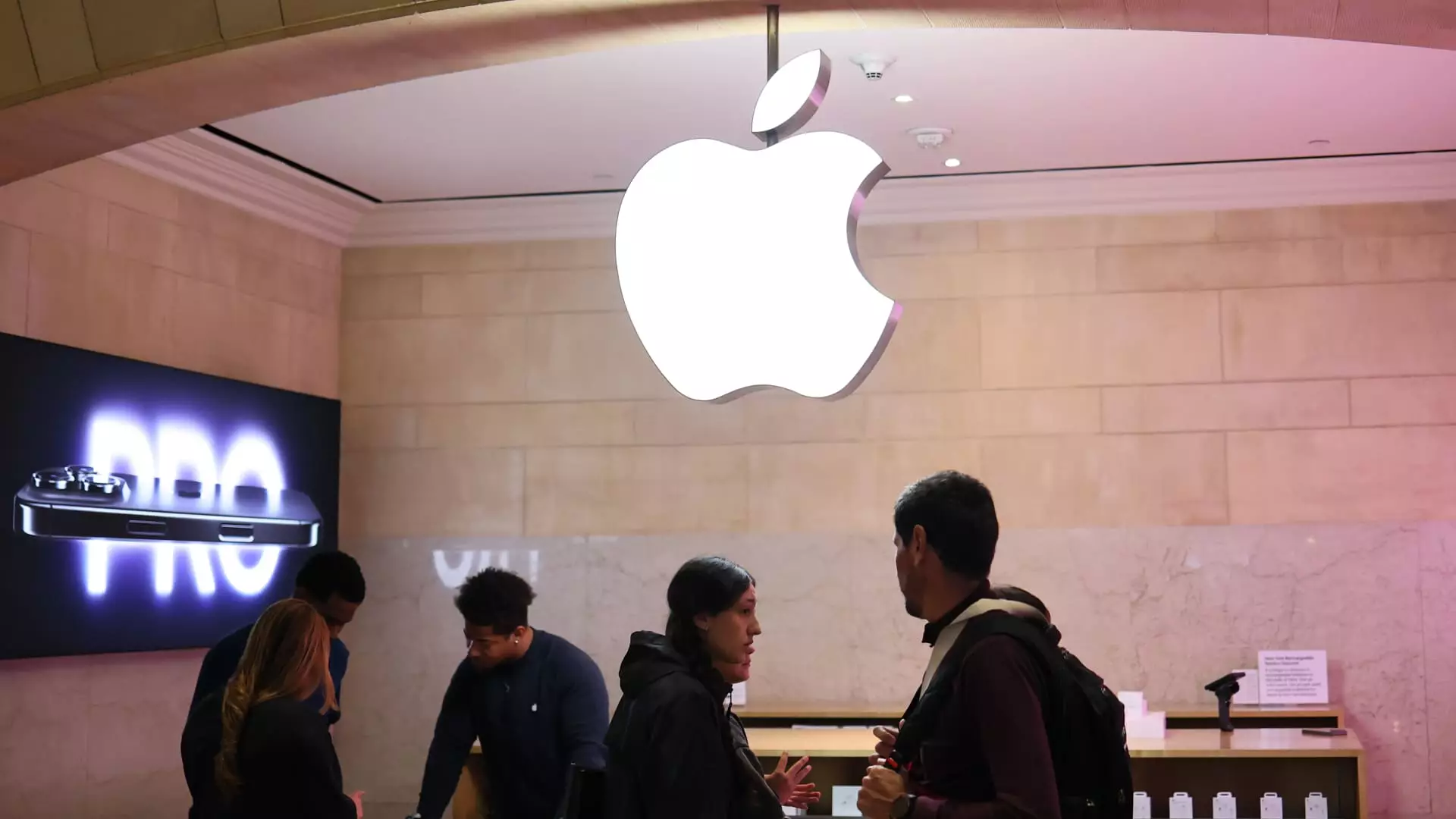Donald Trump’s approach to trade negotiations has always been bold, sometimes to the point of recklessness. The recent 90-day reprieve on many “reciprocal tariffs” creates a false sense of relief among American firms, but for tech behemoth Apple, this elusive tranquility is but a fleeting mirage. The reality is stark: Apple’s supply chains are deeply enmeshed in China, a market plagued by a staggering cumulative tariff rate of 145% on imported goods. This data encapsulates a catastrophic scenario for businesses that rely on smooth trade routes, such as Apple. The stakes are high; experts believe these tariffs could set Apple back years, hindering its ability to innovate in a rapid market that thrives on change.
The disparity between the relief provided to some companies and the predicament faced by Apple is particularly concerning, revealing a deeper flaw in Trump’s strategy. The tech giant is navigating turbulent waters without a life raft—”Its boat has flipped over,” Dan Ives of Wedbush Securities put it aptly. Companies can only manage so much; eventually, a tipping point will arise, and by then, it may be too late for Apple to rectify its course.
Brace for Impact: The Tariff Squeeze
Despite Apple’s efforts to diversify its supply chains over the years, the hard data speaks volumes. Out of 77 million iPhones shipped to the U.S. last year, an overwhelming 80% originated from China. This heavy reliance leaves Apple vulnerable. Current tariff structures threaten to impose an unimaginable 85% price increase on iPhones, a catastrophic blow to both the company’s bottom line and consumer accessibility. Le Xuan Chiew, a research manager at Omdia, succinctly articulates that the financial implications have escalated from manageable to untenable.
The dangerous game being played here isn’t just about uplifting U.S. manufacturing; it’s about survival. The economics of supply chains versus tariffs creates a conundrum. Apple’s pricing strategy has traditionally operated under a model where quality and premium positioning allow for high margins. However, a drastic inflation in costs could alienate a customer base that relies on the flagship offerings that have defined the brand.
Stockpiling: A Band-Aid for a Bleeding Wound
Amidst this strain, Apple’s tactical move to stockpile iPhones ahead of tariffs could serve as a double-edged sword. Although it offers a temporary buffer against price hikes, the question remains: for how long can stockpiles last? Forecasts suggest an increase in consumer purchases preceding further price rises, which compounds the challenge. Price elasticity in tech markets is a slippery slope, and if Apple miscalculates, it could not only face short-term shortages but also long-term brand erosion.
Apple is pivoting towards India for manufacturing, a strategy that has been years in the making. However, leaping from reliance on China to board a new ship involves its own set of risks. While tariffs on Indian exports may favor Apple in the interim, questions linger about the effectiveness of ramping production quickly enough to match demand. It is a game of risk management where geopolitical issues overshadow local decisions.
The Illusion of Tariff Exemptions
While some experts suggest that Apple might find relief through tariff exemptions due to its hefty $500 billion commitment to invest in the U.S., realism must prevail over optimism. Appeals to the Trump administration for exemptions may not deliver results, and the company’s past experiences suggest that these promises can be as hollow as the inflated tariffs themselves. The journey of creating jobs and reshoring production does not guarantee that Apple will escape the fallout from the tariffs.
Analysts like Craig Moffett highlight that even in the best-case scenario of tariff relief, Apple will struggle to pivot fast enough to mitigate damage from the current crisis. The belief that a mere trade deal could solve their issues seems naive when faced with such overwhelming systemic issues. It’s unrealistic to assume that favorable negotiations can promptly translate to an economic miracle for a company of Apple’s stature.
The Price of Innovation
America prides itself on innovation, but that innovation comes at a cost. A shift towards U.S. production is fraught with challenges that can result in significantly higher consumer prices—if iPhones were to be manufactured on American soil, experts estimate prices could jump to $3,500. This would not only price many customers out of the market but would also reinforce the narrative that America is in danger of losing its competitive edge.
In the end, it seems that Trump’s tariff policies, dressed as a mission to revitalize American manufacturing, may inadvertently lead to the strangulation of innovation and consumer choices. If Apple is unable to navigate these turbulent waters effectively, the repercussions could echo throughout the entire tech industry, jeopardizing not just shareholder profits but also countless jobs and consumer satisfaction.

